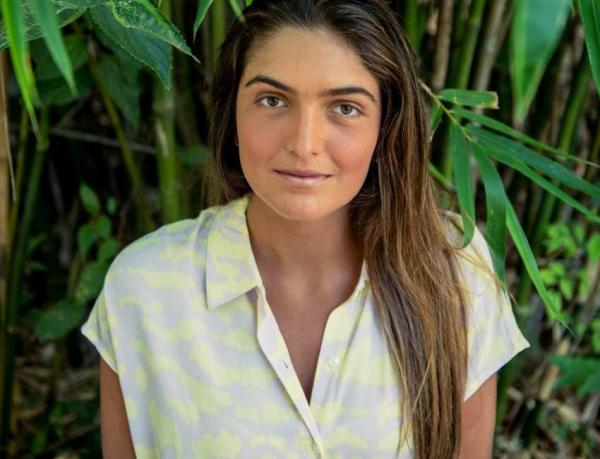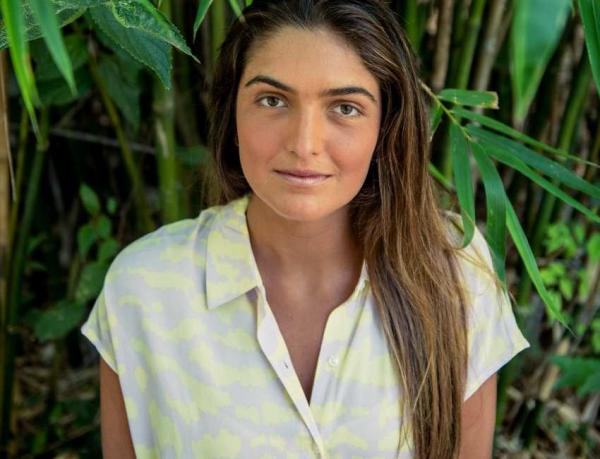-
Register/Login on Totallympics!
Sign up to Totallympics to get full access to our website.
Registration is free and allows you to participate in our community. You will then be able to reply to threads and access all pages.
If you encounter any issues in the registration process, please send us a message in the Contact Us page.
We are excited to see you on Totallympics, the home of Olympic Sports!
-
Posts
8,268 -
Joined
-
Last visited
-
Days Won
41
Content Type
Forums
Events
Totallympics International Song Contest
Totallympics News
Qualification Tracker
Test
Everything posted by rybak
-

Totallympics Annual International Song Contest 2021
rybak replied to rybak's topic in Totallympics International Song Contest
portugal SWEDEN 11 CANADA 10 GREECE 9 NORWAY 8 FRANCE 7 SPAIN 6 CHINA 5 NEW ZEALAND 4 CROATIA 3 DENMARK 2 LITHUANIA 1 -

Totallympics Annual International Song Contest 2021
rybak replied to rybak's topic in Totallympics International Song Contest
portugal Greeting from jury in National language English Translation of Greeting Hello Totallympics, hello people and hello world! This is voting from Portuguese jury. CANADA 10 GREECE 9 NORWAY 8 FRANCE 7 SPAIN 6 CHINA 5 NEW ZEALAND 4 CROATIA 3 DENMARK 2 LITHUANIA 1 -

Totallympics Annual International Song Contest 2021
rybak replied to rybak's topic in Totallympics International Song Contest
Finally I catch up time! Now time for another 15 minutes break -

Totallympics Annual International Song Contest 2021
rybak replied to rybak's topic in Totallympics International Song Contest
AFTER 22/37 JURIES Brazil +0 029 Ireland +0 112 India +5 041 Romania +0 035 Malta +7 042 Spain +0 041 Sweden +0 108 Serbia +0 022 Portugal +0 024 Czech Republic +0 047 Argentina +2 021 Italy +12 094 Canada +4 099 Tunisia +0 019 Greece +0 064 United States +0 033 Netherlands +0 042 Moldova +0 022 Croatia +8 026 Germany +0 048 Bulgaria +0 052 China +9 042 Norway +6 041 Slovakia +0 042 Hungary +0 059 Israel +3 069 Denmark +0 047 Finland +10 046 Mexico +0 021 Kazakhstan +0 012 Great Britain +0 043 Indonesia +0 062 New Zealand +1 015 Poland +11 057 France +0 057 Lithuania +0 034 Slovenia +0 048 Thank you Sweden! Now move to the south and Portugal! Hi @kungshamra71, may we please for your votes? -

Totallympics Annual International Song Contest 2021
rybak replied to rybak's topic in Totallympics International Song Contest
sweden ITALY 12 POLAND 11 FINLAND 10 CHINA 9 CROATIA 8 MALTA 7 NORWAY 6 INDIA 5 CANADA 4 ISRAEL 3 ARGENTINA 2 NEW ZEALAND 1 Goodbye from jury in National language English Translation of Goodbye This was Swedish voting. Bye! -

Totallympics Annual International Song Contest 2021
rybak replied to rybak's topic in Totallympics International Song Contest
sweden POLAND 11 FINLAND 10 CHINA 9 CROATIA 8 MALTA 7 NORWAY 6 INDIA 5 CANADA 4 ISRAEL 3 ARGENTINA 2 NEW ZEALAND 1 -

Totallympics Annual International Song Contest 2021
rybak replied to rybak's topic in Totallympics International Song Contest
sweden Greeting from jury in National language English Translation of Greeting Good evening everyone, this is Swedish jury voting FINLAND 10 CHINA 9 CROATIA 8 MALTA 7 NORWAY 6 INDIA 5 CANADA 4 ISRAEL 3 ARGENTINA 2 NEW ZEALAND 1 -

Totallympics Annual International Song Contest 2021
rybak replied to rybak's topic in Totallympics International Song Contest
AFTER 21/37 JURIES Brazil +6 029 Ireland +2 112 India +9 036 Romania +0 035 Malta +0 035 Spain +0 041 Sweden +12 108 Serbia +0 022 Portugal +0 024 Czech Republic +0 047 Argentina +0 019 Italy +7 082 Canada +11 095 Tunisia +0 019 Greece +10 064 United States +0 033 Netherlands +4 042 Moldova +0 022 Croatia +0 018 Germany +0 048 Bulgaria +0 052 China +0 033 Norway +8 035 Slovakia +0 042 Hungary +0 059 Israel +0 066 Denmark +0 047 Finland +1 036 Mexico +0 021 Kazakhstan +0 012 Great Britain +0 043 Indonesia +0 062 New Zealand +0 014 Poland +0 046 France +5 057 Lithuania +0 034 Slovenia +3 048 Thank you Malta, Sweden almost catch up Ireland! Now move to Sweden and @Belle to which we wish good luck and speed recovery! -

Totallympics Annual International Song Contest 2021
rybak replied to rybak's topic in Totallympics International Song Contest
AFTER 20/37 JURIES Brazil +0 023 Ireland +0 110 India +0 027 Romania +9 035 Malta +0 035 Spain +2 041 Sweden +12 096 Serbia +0 022 Portugal +0 024 Czech Republic +4 047 Argentina +1 019 Italy +0 075 Canada +0 084 Tunisia +0 019 Greece +8 054 United States +0 033 Netherlands +0 038 Moldova +11 022 Croatia +0 018 Germany +0 048 Bulgaria +7 052 China +0 033 Norway +0 027 Slovakia +0 042 Hungary +0 059 Israel +5 066 Denmark +0 047 Finland +0 035 Mexico +0 021 Kazakhstan +0 012 Great Britain +3 043 Indonesia +10 062 New Zealand +0 014 Poland +0 046 France +0 052 Lithuania +0 034 Slovenia +6 045 Thank you India. Let's back to Europe, to @Glen, may I please you for your votes? -

Totallympics Annual International Song Contest 2021
rybak replied to rybak's topic in Totallympics International Song Contest
1 before 2 is missing :/ -

Totallympics Annual International Song Contest 2021
rybak replied to rybak's topic in Totallympics International Song Contest
AFTER 19/37 JURIES Brazil +0 023 Ireland +11 110 India +0 027 Romania +0 026 Malta +0 035 Spain +2 039 Sweden +4 084 Serbia +0 022 Portugal +6 024 Czech Republic +9 043 Argentina +0 018 Italy +8 075 Canada +10 084 Tunisia +0 019 Greece +0 046 United States +1 033 Netherlands +0 038 Moldova +0 011 Croatia +7 018 Germany +3 048 Bulgaria +0 045 China +0 033 Norway +0 027 Slovakia +0 042 Hungary +0 059 Israel +12 061 Denmark +0 047 Finland +0 035 Mexico +0 021 Kazakhstan +0 012 Great Britain +0 040 Indonesia +0 052 New Zealand +0 014 Poland +0 046 France +5 052 Lithuania +0 034 Slovenia +0 039 . -

Totallympics Annual International Song Contest 2021
rybak replied to rybak's topic in Totallympics International Song Contest
Scoreboard is coming, to catch up time you can already presented your votes @Fly_like_a_don. We are waiting for them! -

Totallympics Annual International Song Contest 2021
rybak replied to rybak's topic in Totallympics International Song Contest
brazil ISRAEL 12 IRELAND 11 CANADA 10 CZECH REPUBLIC 9 ITALY 8 CROATIA 7 PORTUGAL 6 FRANCE 5 SWEDEN 4 GERMANY 3 SPAIN 2 UNITED STATES 1 Goodbye from jury in National language English Translation of Goodbye That was voting from Brazilian jury. See you in other threads! -

Totallympics Annual International Song Contest 2021
rybak replied to rybak's topic in Totallympics International Song Contest
brazil IRELAND 11 CANADA 10 CZECH REPUBLIC 9 ITALY 8 CROATIA 7 PORTUGAL 6 FRANCE 5 SWEDEN 4 GERMANY 3 SPAIN 2 UNITED STATES 1 -

Totallympics Annual International Song Contest 2021
rybak replied to rybak's topic in Totallympics International Song Contest
brazil Greeting from jury in National language English Translation of Greeting Hello all, this is Brazilian voting CANADA 10 CZECH REPUBLIC 9 ITALY 8 CROATIA 7 PORTUGAL 6 FRANCE 5 SWEDEN 4 GERMANY 3 SPAIN 2 UNITED STATES 1 -

Totallympics Annual International Song Contest 2021
rybak replied to rybak's topic in Totallympics International Song Contest
When someone will drink Żubrówka surely will look like this an hour after -

Totallympics Annual International Song Contest 2021
rybak replied to rybak's topic in Totallympics International Song Contest
You have actual scoreboard just below your previous post. -

Totallympics Annual International Song Contest 2021
rybak replied to rybak's topic in Totallympics International Song Contest
Noted Just give me you adress and I will sent them -

Totallympics Annual International Song Contest 2021
rybak replied to rybak's topic in Totallympics International Song Contest
AFTER 18/37 JURIES Brazil +0 023 Ireland +0 099 India +0 027 Romania +0 026 Malta +0 035 Spain +0 037 Sweden +0 080 Serbia +0 022 Portugal +0 018 Czech Republic +0 034 Argentina +0 018 Italy +0 067 Canada +0 074 Tunisia +0 019 Greece +0 046 United States +0 032 Netherlands +0 038 Moldova +0 011 Croatia +0 011 Germany +0 045 Bulgaria +0 045 China +0 033 Norway +0 027 Slovakia +0 042 Hungary +0 059 Israel +0 049 Denmark +0 047 Finland +0 035 Mexico +0 021 Kazakhstan +0 012 Great Britain +0 040 Indonesia +0 052 New Zealand +0 014 Poland +0 046 France +0 047 Lithuania +0 034 Slovenia +0 039 Take a look for scoreboard once again. Now it's time for Brazil @titicow or @Laraja, may I please for your votes? -

Totallympics Annual International Song Contest 2021
rybak replied to rybak's topic in Totallympics International Song Contest
Also, please choose one vodka from this set, just in time before we back to voting -

Totallympics Annual International Song Contest 2021
rybak replied to rybak's topic in Totallympics International Song Contest
Before returning to the competition (I hope with counting everything correctly from now ) let's eat another dish. Bigos is a Polish dish of chopped meat of various kinds stewed with sauerkraut and shredded fresh cabbage. It is served hot and can be enriched with vegetables, spices or wine. Originally from Poland, the dish also became traditional in west Belarusian and Lithuanian cuisines, as these regions were once part of the Polish–Lithuanian Commonwealth. The principal ingredients of bigos are assorted kinds of meat chopped into bite-sized chunks and a mixture of sauerkraut (pickled cabbage) and shredded fresh white cabbage. The meats may include pork (ham, shoulder, bacon, ribs, loin, etc.), beef and veal, poultry (chicken, duck, goose, turkey) and game, as well as charcuterie, especially various kinds of kiełbasa, or Polish smoked sausage. The variety of meats is considered essential for good bigos; its preparation may be a good occasion to clean out one's freezer and use up leftovers from other meat dishes. Some of the meats may be roasted before being diced together with other cuts of meat and braised in lard or vegetable oil. The sauerkraut is often rinsed and drained before being chopped and mixed with shredded fresh cabbage. The proportion depends on the sauerkraut's maturity – the longer it has cured, the more sour it tastes, calling for more fresh cabbage to balance the flavor. Traditionally, cabbage was pickled in fall, so bigos made at that time could be made with only half-cured sauerkraut, but by early spring, the sauerkraut had to be combined in equal parts with fresh cabbage. The mixture is precooked in a small amount of water before being mixed with the braised meat and left to simmer for several hours. Ideally, the stew should thicken through evaporation alone, but flour, roux, crumbled rye bread or a grated raw potato may be added to it to take up excess moisture. Other ingredients often added to bigos include onions, diced and browned in lard together with the meat, and dried forest mushroom, that are precooked separately in boiling water. The stew is usually seasoned with salt, black peppercorns, allspice, juniper berries and bay leaves. Some recipes also call for caraway, cloves, garlic, marjoram, mustard seeds, nutmeg, paprika and thyme. The tart flavor of sauerkraut may be enhanced by adding some dry red wine or beet sour (fermented beetroot juice that is also a traditional ingredient of borscht), which may impart a reddish hue to the stew. Bigos is often slightly sweetened with sugar, honey, raisins, prunes or plum butter known in Polish as powidła. Traditionally, bigos is stewed in a cauldron over an open fire or in a large pot on a stove, but it may also be prepared in an electric slow cooker. The contents should be stirred from time to time, to prevent scorching, which may impart a bitter taste to the entire batch. Bigos is considered best after it has been repeatedly refrigerated and reheated to allow the flavors to fuse. -

Totallympics Annual International Song Contest 2021
rybak replied to rybak's topic in Totallympics International Song Contest
Thanks for keeping attention. My bad Everything else is ok? -

Totallympics Annual International Song Contest 2021
rybak replied to rybak's topic in Totallympics International Song Contest
Time for lunch/dinner and most popular Polish dish. Pierogi are filled dumplings made by wrapping unleavened dough around a savoury or sweet filling and cooking in boiling water. They are often then pan-fried before serving. Pierogi are most often associated with the cuisine of Central and Eastern European nations. Pierogi are also popular in modern-day American and Canadian cuisine, where they are sometimes known under different local names. Typical fillings include potato, quark, sauerkraut, ground meat, mushrooms, or fruits. Savoury pierogi are often served with a topping of sour cream, fried onions, or both. While the origin of the pierogi is often under debate, the exact origin of the dish is unknown and unverifiable. It likely originated somewhere in Central Europe or Eastern Europe, and has been consumed in these regions long before any of the present political nations existed. Today, it is a large part of many Central European and Eastern European cultures. One legend relates that in 1238, Hyacinth of Poland visited Kościelec, and on his visit, a storm destroyed all crops; Hyacinth told everyone to pray and by the next day, crops rose back up. As a sign of gratitude, people made pierogi from those crops for Saint Hyacinth. Another legend states that Saint Hyacinth fed the people with pierogi during a famine caused by an invasion by the Tatars in 1241. One source theorizes that in the 13th century, pierogi were brought by Hyacinth from the Far East (Asia) via what was then the Kievan Rus'. Some believe pierogi came from China via Marco Polo's expeditions through the Silk Road. Traditionally considered peasant food, pierogi eventually gained popularity and spread throughout all social classes including nobles. Some cookbooks from the 17th century describe how during that era, the pierogi were considered a staple of the Polish diet, and each holiday had its own special kind of pierogi created. They have different shapes, fillings and cooking methods. Important events like weddings had their own special type of pierogi kurniki – baked pie filled with chicken. Also, pierogi were made especially for mournings or wakes, and some for caroling season in January. Baked pierogi were a typical and the most popular Christmas dish for a long time, especially on the east area. They were stuffed with potatoes, cheese, cabbage, mushrooms, buckwheat or millet. The most famous is the Biłgoraj pierogi stuffed with buckwheat, potatoes and cheese and then baked in the oven. Pierogi are an important part of Polish culture and cuisine today. They are served in a variety of forms and tastes (ranging from sweet to salty to spicy) and are considered to be the national dish. They are served at many festivals, playing an important role as a cultural dish. At the 2007 Pierogi Festival in Kraków, 30,000 pierogi were consumed daily. Polish pierogi are often filled with fresh quark, boiled and minced potatoes, and fried onions. This type is called in Polish pierogi ruskie, which literally means "Ruthenian pierogi" (sometimes being mistranslated as “Russian pierogi”). Ruskie pierogi are probably the most popular kind of pierogi in North America and Poland. The other popular pierogi in Poland are filled with ground meat, mushrooms and cabbage, or for dessert an assortment of fruits (berries, with strawberries or blueberries the most common). Sweet pierogi are usually served with sour cream mixed with sugar, and savoury pierogi with bacon fat and bacon bits. Poles traditionally serve two types of pierogi for Christmas Eve supper. One kind is filled with sauerkraut and dried mushrooms, another – small uszka filled only with dried wild mushrooms – is served in clear barszcz. Leniwe pierogi ("lazy pierogi") are a different type of food, similar to lazy vareniki, kopytka, or halušky. -

Totallympics Annual International Song Contest 2021
rybak replied to rybak's topic in Totallympics International Song Contest
I will check all votes again, its enough time for doing this
-
Who's Online 12 Members, 0 Anonymous, 941 Guests (See full list)













